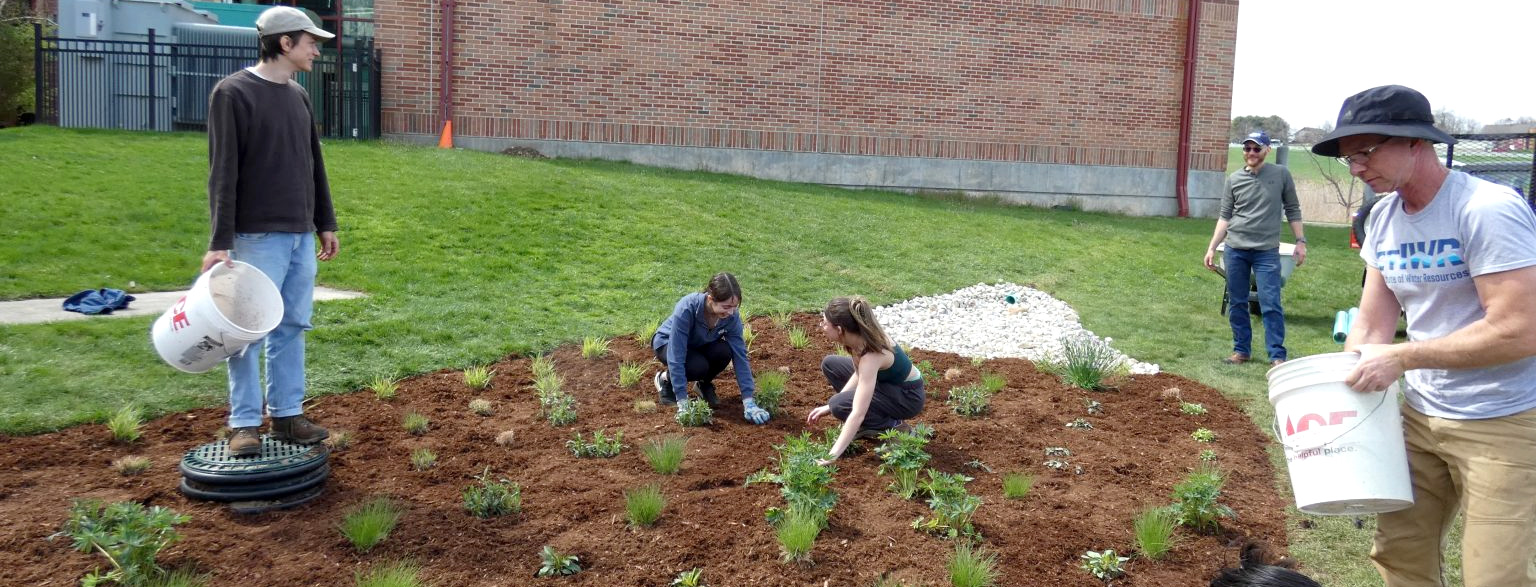

A Design Guide for New England Homeowners
What is a Rain Garden?
Rain gardens are shallow depressions in the landscape that typically include plants and a mulch layer or ground cover. In addition to providing increased groundwater recharge, they are expected to provide pollutant treatment. Pollutant treatment in rain gardens has been attributed to adsorption, decomposition, ion exchange, and volatilization (Prince George's County Bioretention Manual, 2002). Rain gardens can be used in residential settings to accept runoff from a roof or other impervious surface. In a commercial setting, bioretention areas are similar to rain gardens, but are often larger, and have an engineered design.
Why a Rain Garden?
Every time it rains, water runs off impervious surfaces such as roofs, driveways, roads and parking lots, collecting pollutants along the way. This runoff has been cited by the United States Environmental Protection Agency as a major source of pollution to our nation's waterways. By building a rain garden at your home, you can reduce the amount of pollutants that leave your yard and enter nearby lakes, streams and ponds.
Visiting the UConn Dairy Bar?
Take a look at the rain garden installed there! Read about how this student-driven project came to be here.
Tending Your Garden: New Rain Garden Installation Offers Lessons in Local Impact
There's an app!
Check out NEMO's very own Rain Garden App. This app is a free tool providing a step by step guide for how to properly install a rain garden featuring video tutorials, tips and tricks, and various tools to assist you along the way.
Contact
| Phone: | 860-345-4511 |
|---|---|
| E-mail: | nemo.uconn.edu |
Rain Garden Growing Season
More about Rain Gardens:
Can I Build a Rain Garden?
Here are some questions to ask yourself if you are interested in installing a rain garden:
- Do I have the space in my yard to install a rain garden? A typical residential rain garden is 50 to 100 square feet, depending on the size of the area draining to it.
- If I live in an urban area, are there underground utilities that would prevent me from installing a rain garden?
- If I live in an urban area, does my municipality require a permit to install a rain garden?
- Am I physically able to install the garden, or do I have help? Even small gardens involve moving fairly large quantities of soil.
- Large gardens may require the use of heavy equipment. Can I afford to pay for this?
- Plant costs can be around $1-2 per square foot. Can I afford to pay for this?
Environmental Benefits
- Reduce the amount of pollutants that wash into lakes, streams, ponds and wetlands.
- Help sustain adequate stream flow during dry spells through infiltration and recharge.
- Enhance the beauty of your yard and the neighborhood.
- Help protect communities from flooding and drainage problems.
- Reduce the need for costly municipal storm water treatment structures.
Adapted from University of Wisconsin Extension, Rain Gardens: A How-to Manual for Homeowners.
They are Easy to Create
Smaller gardens can be dug by hand with a shovel, or equipment can be rented for larger gardens. Most gardens for average sized homes can be dug by hand if you are in good health, or have some extra help. Once the shallow depression is dug for the rain garden, it won't take any more time or expense than planting other landscaped areas in your yard.
They are Attractive
Build your rain garden to your tastes. While native shrubs and perennials are preferred, you can use other plants (see Plant Database). This is your garden, you need to like it!
For citation purposes: University of Connecticut’s Center for Land Use Education and Research. (January 01, 2022). Rain Gardens. https://nemo.uconn.edu/raingardens/

